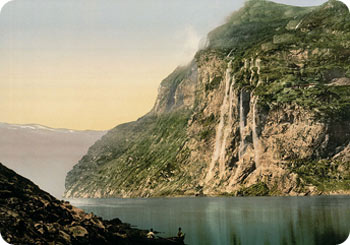Even if you’ve never visited Norway, one word is likely to conjure images of beautiful Norwegian coastlines: fjords. These deep canyons are found around the world, but perhaps because of the name -- a Norse word that means “place where you cross over” -- they’re most associated with Norway.

Wherever they’re found, fjords were created by glaciers.
As a glacier flows between mountains or through valleys, it tears out rocks. That creates an abrasive layer that scours a deep, narrow channel all the way to the sea. At the fjord’s mouth, the channel typically cuts hundreds or even thousands of feet below the surface of the sea.
Part of the mouth is filled with the glacier’s rocky debris, which creates a shallow sill. Freshwater flows out at the surface of the fjord, while saltwater flows in at the bottom. In some cases, though, the sill is so big that it blocks most of the water flow. Bacteria consume the water’s oxygen, leaving little for fish or other life.
The amount of rock carved by the flowing glaciers can be impressive. The glacier that created Sognefjord in Norway, for example, gouged out about 800 cubic miles of bedrock. That created a channel that’s up to 4,300 feet deep and 125 miles long -- the longest fjord in the world.
Fjords are found in many countries. Several are at Kenai Fjords National Park in Alaska -- an American landscape that looks -- and sounds -- a lot like Norway.

